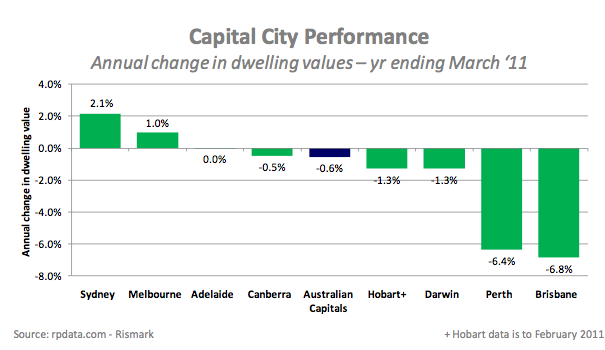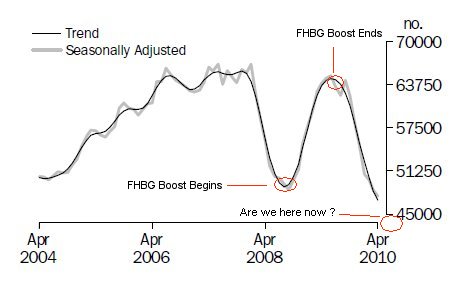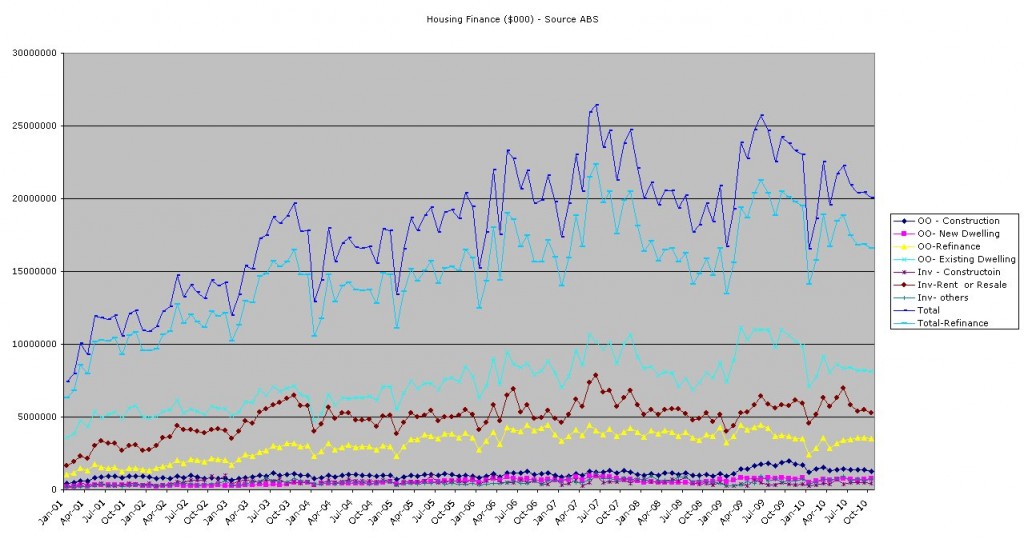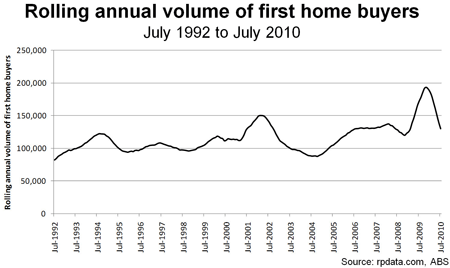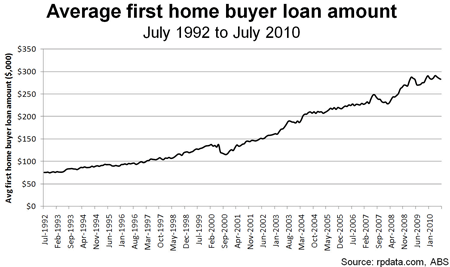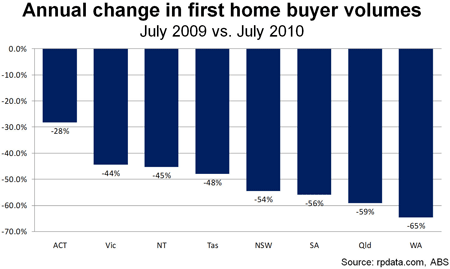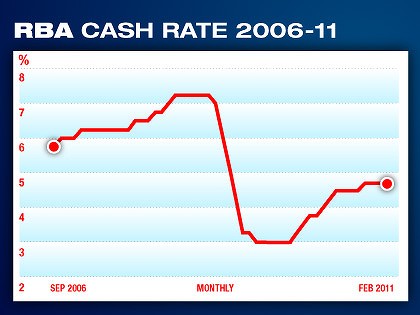In a speech this week, Deputy Governor of the the RBA, Ric Battellino, warned that many first home buyers that bought during the 2009 FHOG scheme were in jeopardy as interest rates rise:
Another potential source of vulnerability in the housing market that is often mentioned is the many first-home owners who were attracted into the housing market in 2009 by the increase in the first-home owner grant. The concern is that some of these may have over-committed themselves financially in order to enter the market, and are now vulnerable to rising interest rates. This group bears close watching but, so far at least, first-home owners do not seem to be disproportionately represented in loan arrears.
Now, it must be noted that delinquencies are still relatively low by world standards and are rising of a low base. However, unlike others, I am aware that this tends to be a a leading indicator not a trailing one. Moreover, presumably the RBA sees the distinct possibility of an accident coming for the first home buyers in question or why raise the point? The latest data from the market certainly supports the premise that recent buyers are in for a rough ride in Queensland and WA.
So, given the RBA has posed the question, as well as implicitly passed buck to the government for the outcome, I thought it might be useful to ask who is responsible?
Back in June last year I commented on the effect of the stimulus environment as its effects began to wear off, at the time I called it a stimulus driven demand bubble:
There is absolutely no doubt that the stimulus environment had a massive medium term effect on the market, you can see from the housing finance figure from late last year that it “kicked the can” for housing, even though the underlying downward trend has now been re-established:
I also recall that the Treasurer was well aware of the effect the policy was having on the market at the time, but did nothing to push against it:
The Federal Government has no intention of ending early its more generous first home-owners grant despite signs a housing price bubble may be developing.
The Governor of the Reserve Bank, Glenn Stevens, last week warned that low interest rates could fuel a house price bubble if supply failed to improve. His warning was backed up by a private survey that showed residential property prices experienced the biggest quarterly growth since the pre-crisis days of late 2007.
The residential construction sector reported two-year high activity with official data showing building approvals surged by 9.3 per cent in June, marking the biggest monthly increase since May 2005.
The Government’s stimulus measure to increase until September 30 the first home-owners grant for new ($21,000) and established homes ($14,000) has been seen as the catalyst for a lift in property prices and building starts.
“To pull that stimulus out now would be to pull the rug from underneath recovery,” Federal Treasurer Wayne Swan told the Nine Network.
You can see from the statistics of 2009-2010 that the first home buyers grant boost was a very big influence on giving medium term relief to the falling market:
But it was always going to be unsustainable, and once the boost ended the first home buyers market collapsed, even before the latest interest rate rises started to kick in:
In their defence some members of the Treasury did at least try and eek out a warning in the dying days of the stimulus bubble but this was too little, too late.
However, the government itself was not alone in creating a hyper-stimulatory environment for housing. The RBA adjusted interest rates down to 50 year lows during this period:
Obviously the RBA had little choice in this, given that the global financial turmoil of the time, but they have done an excellent job of jawboning the public recently, so I question whether or not they might have pressed harder against the government’s housing policy at the time because it was very obvious by early in 2009 exactly what was happening. If the outcome of these dual policies was actually the desired effect then fair enough, but if that is the case, then don’t come back 2 years after the fact and claim that it was someone elses fault.
In the RBA’s favour, Glenn Stevens did make an unprecedented appearance on national television to warn people about the risks of speculating on house prices, and has made many such warnings since, but again it was too little too late. The first home buyers grant boost had ended 3 months earlier and the damage was already done.
But it wasn’t just the RBA and the government who were part of the stimulus. The banks themselves played a big part and in the boom and in early stages of the 2009 where still offering 100% loans with no deposit except the first home buyers grant boost. Banks were so active at the time that by May 2009, they were actually warned about their rate of first home buyer lending:
Australia’s big banks will join Canada’s major lenders in the single A credit rating ranks and risk copping higher wholesale funding costs unless they pare back lending. Analysts say Australia’s major lenders will lose their coveted AA credit rating – shared by only five other retail global banks – and slip down a notch if their high proportion of loans to deposits is not curtailed.
Finally, there is the first home buyer’s themselves. Many of them young and naive and trapped in a society utterly obsessed with housing that was screaming in their faces that “this is the time to buy”. Even so, they are adults and not 100% off the hook.
So who is responsible in the event that a year’s worth of first home buyers are sacrificed to angry housing gods, as Mr Battellino has mooted? If I was going to rate it, my guess would be 50% government, 25% banks, 20% RBA, 5% borrowers. Anyone got a different set of numbers?

